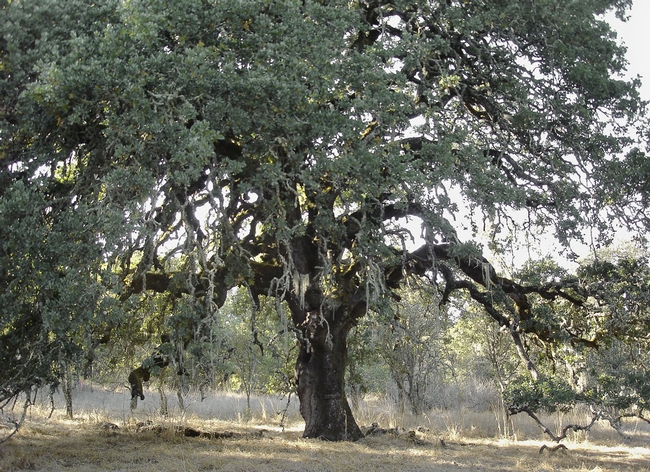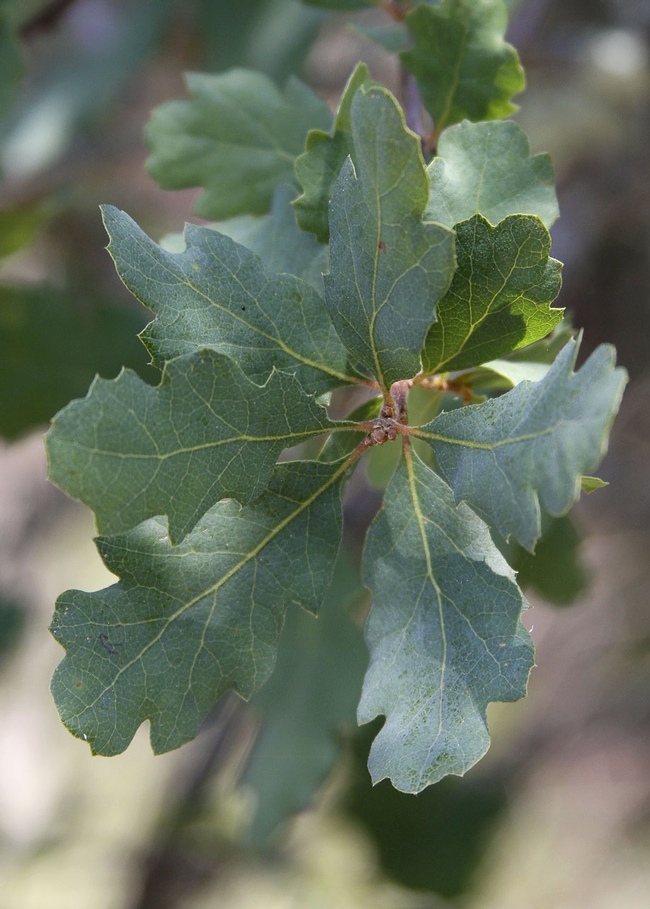
Researchers with UC Agriculture and Natural Resources (UC ANR) have worked with landowners for decades to help them manage these oak woodlands in ways that balance the ranchers' economic needs with ecological considerations.
In the late 1990s, Tulare County ranchers Jim and Gay Versteeg were interested in thinning their blue oak stands in order to improve biodiversity of the forage growing on the land. The family offered UC ANR researchers three acres to study blue oak tree management practices to better understand the impacts of various thinning practices.
For thousands of years, fire was an important part of California's oak woodlands. Native Americans and, more recently, ranchers set fires to improve habitat and enhance desirable vegetation. However, aggressive fire exclusion during the last 30 years has led to significantly denser stands of blue oak trees.
“We looked into the fire history on the Versteeg ranch,” said Richard Standiford, UC ANR Cooperative Extension specialist based at UC Berkeley. “It burned about every 13 years prior to 1965, but since then, there have been no fires at all.”
Standiford conducted the study with two San Joaquin Valley-based Cooperative Extension natural resources advisors, Neil McDougald of Fresno and Madera counties and Ralph Phillips of Kern County. One-third of the study area was moderately thinned, and one-third was heavily thinned. For comparison purposes, the researchers left one-third of the study area untouched. The study area excluded livestock, but it was accessible to deer and rodents.

“The Versteegs thought that, with more sunlight, the amount of native grasses would increase, but that wasn't the case,” Standiford said. “The vegetation in all the plots was mostly grasses and forbs that were introduced after Europeans began settling California, as it is in most oak woodland around the state.”
Thinning did result in the growth of younger trees from stump sprouting.
“We want the sprouts to come back to provide the next generation of trees so when the big ones die or blow over, there are young trees to take their places,” Standiford said. “The main way in which blue oaks regenerate is sprouting from stumps.”
Acorn production on a landscape scale was not impacted by thinning. Trees in the thinned plots produced more acorns per tree, however, because there were fewer trees, the same amount of acorns per acre was produced.
Standiford shared the results of the study with ranchers, land managers and researchers at the 7th California Oak Symposium in 2014; the research will be published in the symposium proceedings later this spring. He said the study results validate for landowners that thinning is an appropriate management practice on blue oak rangeland. Forage increases, the trees survive and grow back.
“If ranchers intend to thin every 15 years or so, moderate thinning is acceptable,” Standiford said. “If this is something they would do every 30 years, they could thin heavily.”
An initiative to maintain and enhance sustainable natural ecosystems is part of UC Agriculture and Natural Resources Strategic Vision 2025.